Fifty kilometers might sound abstract, but it is a distance that shapes our travel, fitness goals, and view of the world’s scale. This guide offers 10 clear comparisons from urban landscapes to natural wonders. It make 50 kilometers easier to visualize and appreciate in daily life.
In this article, we explore 10 comparisons to help you grasp the length of 50 kilometers. We will examine this distance through examples in transportation, sports, urban infrastructure, and natural landmarks. These relatable analogies make 50 km feel more accessible and meaningful.
Understanding the 50 Kilometers
A table of metric and imperial conversions to help visualize and apply the 50 kilometer distance.
Metric and Imperial Conversions
To better comprehend the scale of 50 kilometers, it is helpful to understand how this distance translates to other common measurement units. The table below provides conversions for 50 kilometers across various metric and imperial measurements:
| Measurement Unit | Conversion |
| Kilometers (km) | 50 |
| Meters (m) | 50,000 |
| Miles (mi) | 31.07 |
| Feet (ft) | 164,042 |
| Yards (yd) | 54,681 |
| Inches (in) | 1,968,504 |
Referencing these conversions can help you visualize and apply the 50 km distance to your daily life, whether planning a road trip, setting a fitness goal, or marveling at our planet’s scale.
For example, knowing 50 km is ~31 miles can estimate driving times and fuel consumption. Comparing it to a 42.2 km marathon gives runners a sense of the challenge.
Mastering the 50 km distance and its equivalents enhances your ability to grasp this measurement’s true scale and apply it meaningfully.
Read Amazing about: “Mount Everest: Its Measurement and Other Fascinating Facts”
Time Perspectives for 50 Kilometers
Here is a look at what covering 50 kilometers means in everyday travel times.
1. Walking Distance

If you were to set out on foot to cover a distance of 50 kilometers, it would take the average person around 10 hours. Assuming a comfortable walking pace of 5 kilometers per hour, this trek would be equivalent to walking for a full day with short breaks.
For those with a higher fitness level who can maintain a brisker 6 km/h pace, the 50 km walk could be finished in roughly 8.5 hours. On the other hand, a more casual stroll at 4 km/h would require approximately 12.5 hours to reach the 50 km mark.
To put this into perspective, the average person walks around 5 km per day as part of their regular routine. So a 50 km walk would be equivalent to about 10 days’ worth of your normal walking activity.
2. Cycling Distance
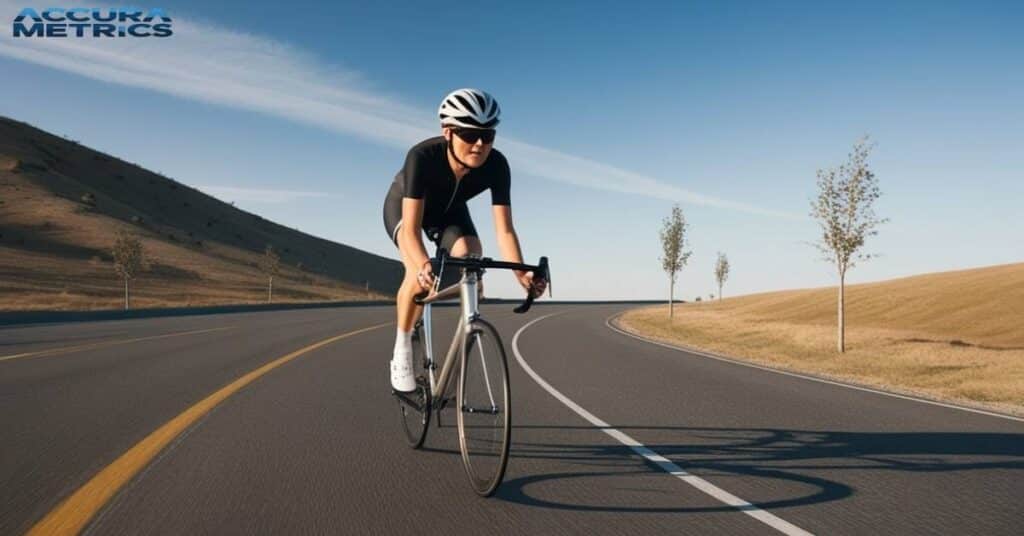
Covering 50 kilometers by bicycle would be a much quicker endeavor. An amateur cyclist maintaining a moderate pace of 20 km/h could complete the distance in just 2.5 hours. Meanwhile, a more athletic rider cruising at 25 km/h could finish the 50 km ride in roughly 2 hours.
For those seeking a challenging yet achievable cycling goal, 50 km represents an excellent weekend workout. It is a distance that can be accomplished by most regular cyclists without being overly taxing, making it a popular route for recreational riders and training sessions alike.
3. Driving Time

When it comes to driving, the time it takes to cover 50 kilometers can vary greatly depending on the road conditions and your location. In dense urban areas with heavy traffic, the 50 km journey could take well over an hour. However, on open highways with light traffic, you could cover the same distance in just 30-45 minutes.
As a general estimate, 45 minutes to 1 hour is a reasonable timeframe for driving 50 kilometers in most situations. This makes the 50 km distance practical for daily commutes, quick errands, or small regional trips though the actual time may depend on factors like your local speed limits, traffic patterns, and the specific route you take.
Natural Landmarks & Geographic Comparisons
See how 50 kilometers measures up against famous landmarks and places.
4. Famous Beaches
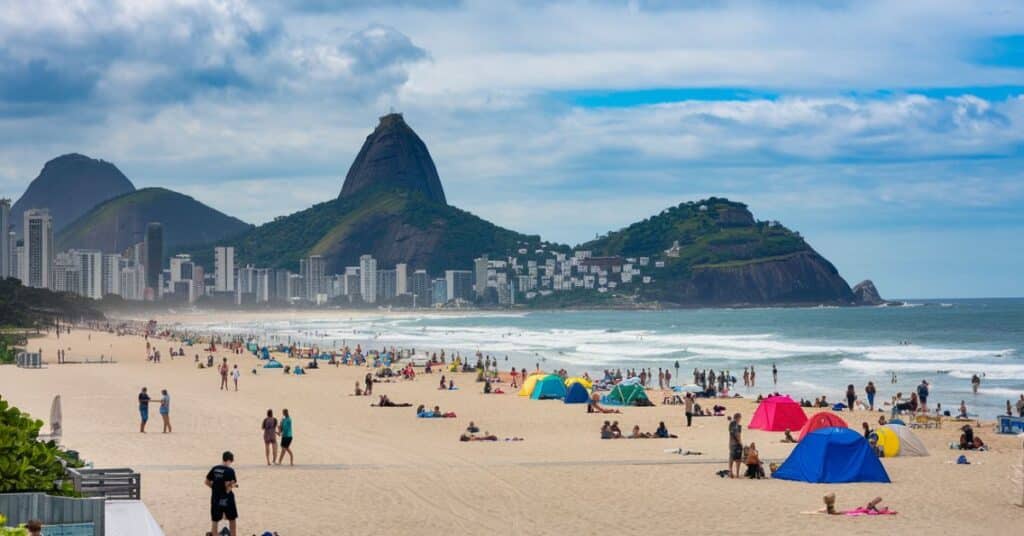
Read More “Mount Everest: Its Measurement and Other Fascinating Facts”
To provide a sense of scale, let us consider some famous beaches around the world. The iconic Copacabana Beach in Rio de Janeiro, Brazil is roughly 4.5 kilometers long. This means that a distance of 50 kilometers would be equivalent to over 11 times the length of Copacabana Beach.
Shifting our focus to the famous Bondi Beach in Sydney, Australia, we find that it measures approximately 1 kilometer in length. In this case, 50 kilometers would equate to 50 times the length of Bondi Beach a truly staggering comparison that highlights just how vast a 50 km distance can be.
5. Mountain Heights for Scale
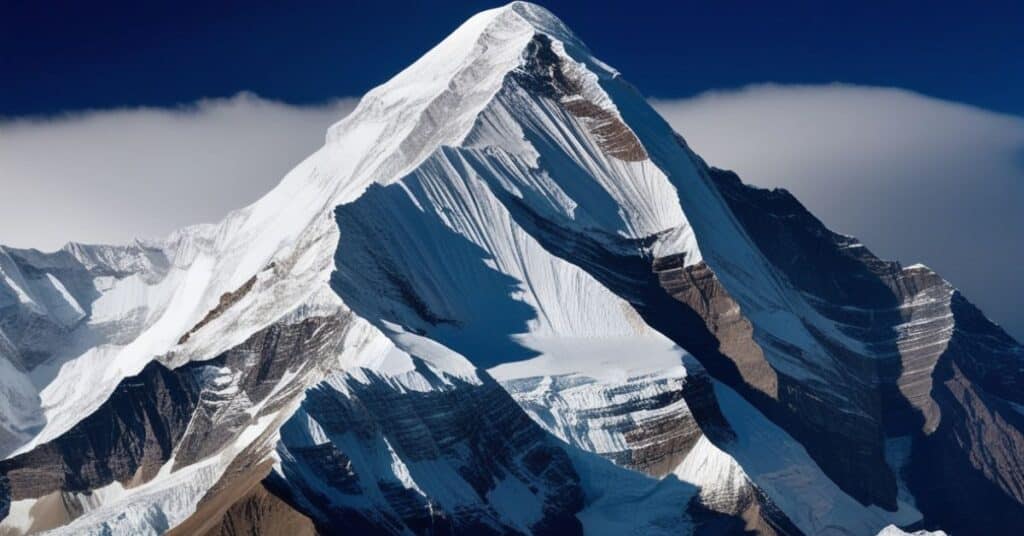
Another helpful way to visualize the 50 km distance is by comparing it to the heights of renowned mountains. The summit of Mount Everest, the world’s tallest mountain, stands at an impressive 8.8 kilometers above sea level. This means that 50 kilometers is almost 6 times the height of Mount Everest.
Shifting our focus to Japan’s iconic Mount Fuji, we find that its peak rises 3.8 kilometers into the sky. In this context, 50 kilometers would be roughly 13 times the height of Mount Fuji a testament to the sheer scale of this distance.
6. Notable City Distances

To provide a more urban perspective, let us consider the size of some famous cities. The length of Manhattan Island in New York City is approximately 21.6 kilometers. This means that 50 kilometers would be about 2.3 times the length of Manhattan.
Looking at San Francisco, the width of the city from the Pacific Ocean to the San Francisco Bay is around 11.3 kilometers. In this case, 50 kilometers would be nearly 4.4 times the width of San Francisco.
Athletic & Sports Perspectives
Discover what 50 kilometers means for athletes in various sports.
7. Running Benchmarks

In the world of athletics, the standard marathon distance is 42.2 kilometers. This means that 50 kilometers is just slightly beyond the length of a full marathon race. For seasoned runners, a 50 km run would represent a challenging yet achievable feat of endurance.
To provide some additional context, the longest running event in the Olympic Games is the men’s 50 km race walk, which covers the exact distance we are discussing. This event showcases the incredible physical and mental stamina required to cover such a distance on foot.
Continue reading “15 Common Things That Are 5 Feet Long”
8. Professional Sports

In the realm of professional cycling, the Tour de France is renowned for its grueling multi stage format. The average daily stage of the Tour covers approximately 190 kilometers. This means that 50 kilometers would represent just over a quarter of the typical daily distance covered by elite Tour de France cyclists.
For marathon runners, a 50 km training run would be considered a substantial long distance workout, typically reserved for seasoned athletes preparing for an upcoming race. This distance is roughly 1.2 times the length of a standard 42.2 km marathon.
9. Cross Country Skiing Trail
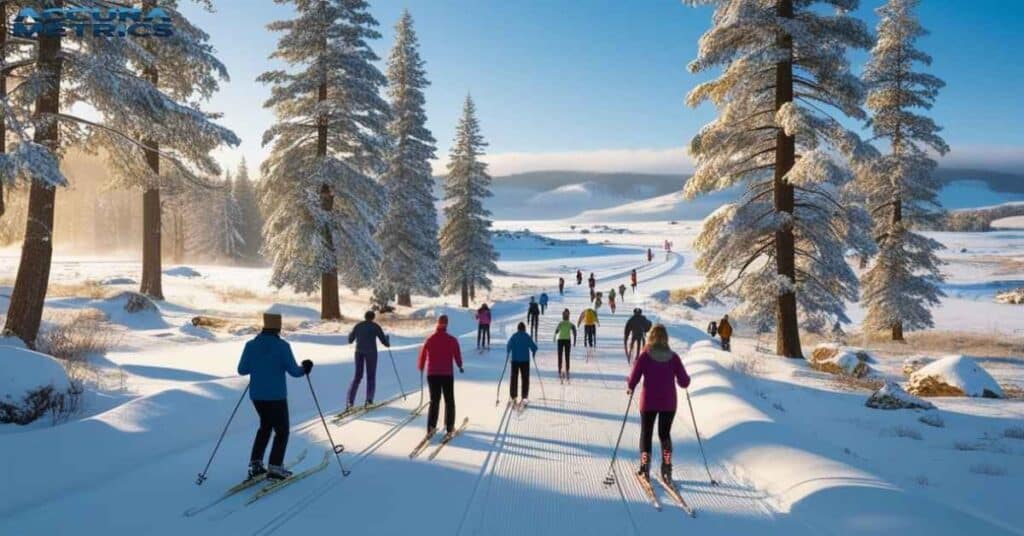
A 50 km cross country skiing trail is a challenging yet rewarding experience for enthusiasts of the sport. In regions with vast snowy landscapes, some trails extend over this distance, offering skiers a chance to glide through forests and across open fields.
Skiers need endurance and skill to navigate such long trails, which often pass through beautiful, serene environments. Completing a 50 km journey on skis can be a test of stamina and technique, while also providing an opportunity to connect with nature in a way that few other sports allow.
Urban & Infrastructure Examples
Understand how 50 kilometers compares to well known roads and transit routes.
10. Famous Roads & Routes
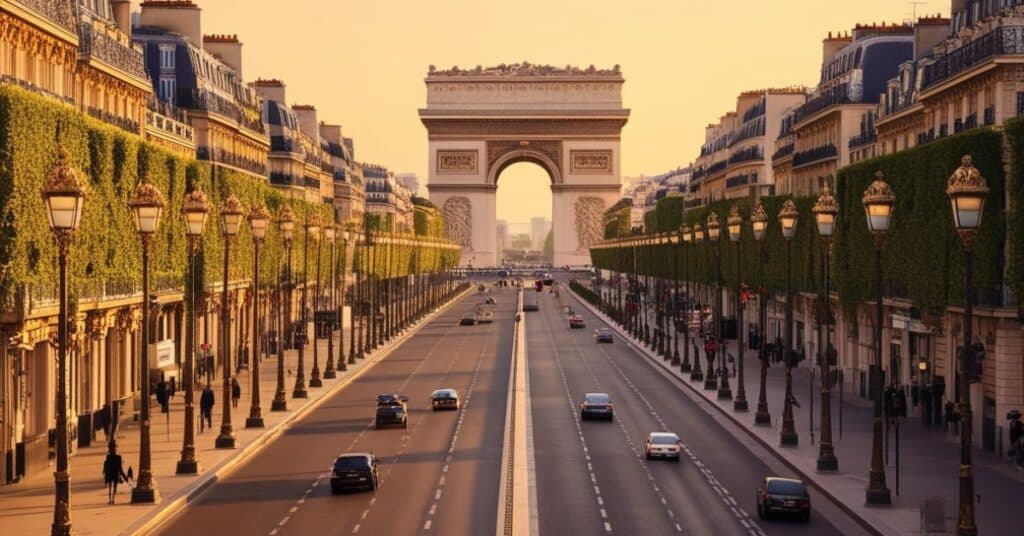
The iconic Las Vegas Strip in Nevada, USA is approximately 6.8 kilometers long. Comparing this to our 50 km distance, we can see that 50 kilometers would be equivalent to over 7 times the length of the famous Las Vegas Strip.
Another renowned urban feature is the Champs Élysées in Paris, France, which measures around 1.9 kilometers in length. In this case, 50 kilometers would be roughly 26 times longer than this famous Parisian avenue.
11. Transit Systems

When it comes to public transportation, the average subway line length in major cities around the world tends to be in the range of 20-40 kilometers. A distance of 50 kilometers covers one and a quarter to two and a half typical subway lines.
For commuter rail systems, a 50 km journey could represent a substantial portion of a daily route. Many commuter train lines connect suburbs to city centers over distances of 30-60 kilometers, making 50 km a meaningful and practical distance for regular transit users.
Learn more here “New York Cricket Stadium: Guide to Dimensions and Features”
Practical Applications
Grasping the true scale of 50 kilometers can have numerous practical applications in our daily lives. For instance, understanding this distance can help with planning daily commutes, determining the feasibility of weekend getaways, and setting realistic fitness goals.
Let us consider a few examples:
- Daily Commute: If your daily commute to work is around 25 km each way, you would be traveling a total of 50 km per day for your work routine. This knowledge can help you budget your time and fuel/energy expenditure accordingly.
- Weekend Trip Planning: Knowing that 50 km is a reasonable distance for a day trip or weekend getaway, you can more easily identify potential destinations and plan your itinerary. This distance could encompass a picturesque journey to a nearby natural landmark, beach, or small town.
- Fitness Goals: For runners and cyclists, a 50 km distance represents a substantial challenge that can be incorporated into training programs. This knowledge helps set achievable milestones. It also tracks your progress toward mastering this impressive feat of endurance.
50 kilometers Visual Aids & Tools
To further enhance your understanding of the 50 km distance, it can be helpful to visualize it on a map or use online tools to contextualize the scale.
Many digital mapping services allow you to overlay a 50 km distance circle or line on a map of your local area or a region of interest. It gives a tangible sense of how far-reaching this distance is. It helps identify landmarks, cities, or natural features within that radius.
Various online distance calculator tools can convert 50 km to miles (approximately 31.07 miles). They also provide estimated travel times for different modes of transportationThese calculators can be invaluable when planning trips, commutes, or fitness activities.
FAQs About 50 Kilometers
1. How long does it take to walk 50 km?
The average person can walk 50 km in around 10 hours. Assuming a comfortable pace of 5 km/h, the 50 km trek would take a full day of walking with short breaks. Fitter individuals maintaining 6 km/h could complete the 50 km walk in 8.5 hours. A more casual 4 km/h pace would require about 12.5 hours.
2. How far is 50 kilometers in miles?
50 kilometers is equivalent to roughly 31.07 miles. To convert kilometers to miles, you can multiply the kilometer value by 0.6214, which is the conversion factor between the two units of measurement.
3. How long does it take to cycle 50 km?
An amateur cyclist at 20 km/h could cover 50 km in around 2.5 hours. A more athletic rider maintaining 25 km/h could complete the 50 km ride in approximately 2 hours. This makes 50 km a popular distance for recreational cyclists and training sessions.
4. How far is 50 kilometers compared to the Las Vegas Strip?
The iconic Las Vegas Strip is approximately 6.8 km long. It means that 50 km is over 7 times the length of the famous Las Vegas Strip. This comparison provides a sense of scale for this significant measurement.
5. How does 50 kilometers compare to the height of Mount Everest?
The summit of Mount Everest stands at 8.8 km above sea level. This means that 50 km is almost 6 times the height of the world’s tallest mountain, highlighting the sheer vastness of this distance measurement.
Get the facts “How Big is New York City? Dimensions and Population Over Time”
Conclusion about 50 kilometers
By exploring the many real world comparisons and perspectives outlined in this article, you now have a much deeper understanding of just how far 50 kilometers truly is. This distance can be expressed through the lens of transportation, natural landmarks, urban infrastructure, athletic challenges, and practical daily applications.
Whether planning a weekend getaway, training for a long distance event, or marveling at our planet’s scale, understanding 50 kilometers will enhance your appreciation and help you relate it to your experiences and goals.
Continue reading “Lake Michigan Dimensions, Size, Depth, and Influence”

My name is Linda, and I am an experienced blogger with a passion for precision and craftsmanship. With years of expertise, I contribute to Accura Matrics, bringing a wealth of knowledge and a keen eye for detail. My insightful articles and expert tips are designed to help readers achieve excellence in their measurements and dimensions projects, offering valuable guidance in the pursuit of accurate and thoughtful design.

